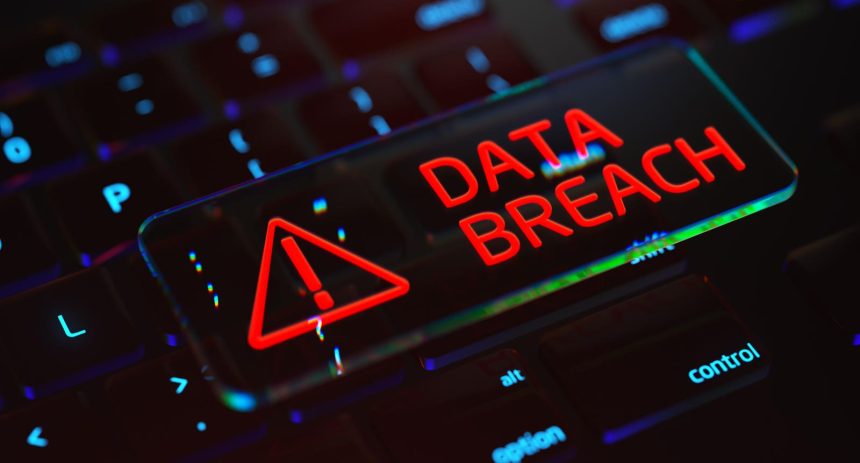The recent data breach at Community Health Center (CHC), impacting over one million patients, underscores the growing cybersecurity vulnerabilities within the healthcare sector. While CHC has stated this incident was not a ransomware attack, the theft of highly sensitive personal and medical information, including Social Security numbers, diagnoses, and treatment details, presents a significant risk to affected individuals. This incident follows closely on the heels of a ransomware attack targeting the New York Blood Center, further highlighting the precarious position of healthcare providers in the current cybersecurity landscape. The CHC breach involved unauthorized network access by a skilled hacker who successfully exfiltrated patient data. While CHC asserts the breach was contained quickly and that no systems were disrupted, the sheer volume of compromised data raises serious concerns about potential identity theft, medical fraud, and extortion attempts. The incident serves as a stark reminder of the urgent need for robust security measures within healthcare organizations to safeguard patient information and maintain operational integrity.
The CHC data breach reveals a concerning trend of escalating cyberattacks targeting healthcare providers. The stolen data, encompassing a wide range of personal and medical information, creates a fertile ground for malicious actors. Patients now face the risk of identity theft, where criminals could leverage stolen Social Security numbers and personal details to open fraudulent accounts or access existing ones. The compromised medical information also presents the possibility of medical fraud, with perpetrators potentially using stolen data to obtain medical services or file false insurance claims. Furthermore, the possession of sensitive health details opens the door to potential extortion attempts, where individuals might be targeted with threats of public disclosure or other forms of coercion. The combination of personal, financial, and medical information stolen in this breach creates a multifaceted threat for the affected individuals, necessitating proactive measures to mitigate the potential damage.
The cybersecurity challenges faced by healthcare providers are multifaceted and demand a comprehensive approach to mitigation. Healthcare organizations often operate with limited budgets and resources, making it difficult to invest in sophisticated cybersecurity infrastructure and personnel. The sensitive nature of patient data makes healthcare a prime target for cybercriminals, who can exploit this information for financial gain or other malicious purposes. The increasing reliance on interconnected systems and digital technologies further expands the attack surface, creating more opportunities for breaches. Moreover, the regulatory landscape surrounding healthcare data privacy adds another layer of complexity, requiring organizations to comply with stringent regulations and reporting requirements. This confluence of factors creates a challenging environment for healthcare providers striving to maintain robust cybersecurity defenses.
The recent ransomware attack against the New York Blood Center exemplifies the devastating consequences of successful cyberattacks within the healthcare sector. Ransomware attacks, which involve encrypting critical data and demanding payment for its release, can cripple healthcare operations, delaying or preventing the delivery of essential services. In the case of the New York Blood Center, the attack disrupted blood donation processes, potentially jeopardizing the supply of blood to hundreds of hospitals. This attack emphasizes the vulnerability of critical healthcare infrastructure and the potential for widespread disruption in the event of a successful attack. The incident reinforces the importance of proactive cybersecurity measures, including robust data backups, incident response plans, and employee training, to mitigate the impact of ransomware attacks and other cyber threats.
Expert analysis of the current cybersecurity landscape points to several factors that make healthcare organizations particularly vulnerable to ransomware attacks. The reliance on government subsidies and charitable donations often leaves healthcare providers with limited resources for cybersecurity investment, making them attractive targets for cybercriminals seeking “low-hanging fruit.” The critical nature of healthcare services, where human lives are at stake, creates a heightened sense of urgency, often pressuring organizations to pay ransoms quickly to restore services. This predictability makes healthcare a lucrative target for ransomware groups, who can exploit this vulnerability to extract higher payments. Furthermore, the wealth of sensitive data held by healthcare providers, including information on high-profile individuals, adds to the potential value of stolen data, further incentivizing attacks.
In response to the data breach, Community Health Center has stated that it has implemented additional security measures and software to monitor for suspicious activity. However, this reactive approach is insufficient to address the systemic cybersecurity challenges faced by the healthcare sector. A more proactive approach is needed, emphasizing preventative measures such as robust security protocols, regular vulnerability assessments, and comprehensive employee training. Healthcare organizations must prioritize cybersecurity as a core operational function, investing in the necessary resources and expertise to protect sensitive patient data and maintain the integrity of critical healthcare services. Collaboration between healthcare providers, cybersecurity experts, and regulatory bodies is essential to develop effective strategies for mitigating the evolving threat landscape and ensuring the continued safety and security of patient information.



